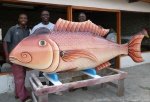The sculptor has been invited to Siberia by the Museum of World Funeral Culture owned by Sergey Yakushin. During 3 weeks of July Eric Anang will make 2 coffins for the Museum from Siberian pine-wood. The third one - in the form of a hammer is being produced from African wood in the workshop in Ghana and will be shipped to Novosibirsk in the end of summer.
Special coffins made in various unusual forms are well-known in the world for many years. The Kane Kwei Carpentry Workshop is a studio established in Teshie, Ghana, since the Fifties. It is known for its Design Coffins that became symbolic of African artistic creativity.
Eric Adjetey Anang (born 1985) is a Ghanaian sculptor born in Teshie, Ghana, where he lives and works.
In 2001, he introduced Ghana design coffins at Gidan Makama Museum Kano, Nigeria, under the auspices of Alliance française in Kano.
After completing his secondary school, he took over in 2005 the management of the Kane Kwei Carpentry Workshop that was established by his grandfather Seth Kane Kwei who invented design coffins in the 50’s. Within three or four years, he became one of Ghana's leading artists in design coffin making, recognised both locally and internationally.
In 2009, Eric Adjetey Anang with his creations was featured in a television commercial for Aquarius (sports drink). He has been collaborating with the Oregon College of Art & Craft, organizing a two months residence in Ghana for Senior Lecturer Michael de Forest.
In January 2010, Eric took part in the photographic project Please, do not move ! with the French photographer Guy Hersant. At the end of the same year, he takes part in the Black World Festival in Dakar as representative of designers from Ghana.
Eric Adjetey Anang is also involved in anthropological research related to Ga people with Roberta Bonetti (Affiliate Professor in History of Anthropology at University of Bologna and Fellow at Italian Academy for Advanced Studies, Columbia University.
At the age of 24, Eric Adjetey Anang has been acknowledged as "a model for African urban youths" by the French Newspapers Le Monde Diplomatique
Further information at: ghanacoffin.com
The story of Ghanaian custom coffin maker Eric Adjetey was used for the commercial of Spanish energy drink Aquarius. See video below.
History
Seth Kane Kwei ( 1922–1992 ) was a carpenter joiner established in Teshie, in the suburbs of Accra in Ghana. He is considered as the inventor at the beginning of 1950s of the design coffins or fantasy coffins, called Abebuu adekai (" boxes with proverbs ") by Ga people that is the dominant ethnic group of the region of Accra.
The use of these coffins during the burial in Ga country became widespread from the beginning 1960s, becoming de facto a real tradition. Design coffins are acknowledged as symbolic of the contemporary creation in Africa.
At the death of Kane Kwei, his son Sowah took over the workshop, then Cedi - junior child of Kane Kwei- after the death of Sowah in 1999. Since 2005, Eric Adjetey Anang (born 1985, son of Cedi) attempts to revitalize the creativity of the studio by the introduction of new models, the creation of furniture realized in the same spirit and with the same techniques as the coffins.
About ten carpenter's workshops established in Teshie and in the region of Accra produce similar coffins. Among them, we find Tei in Dorwanya, Lay and Hello in Teshie, Tetteh in Amasaman and Tetteh Red in Ningo. Their bosses are former apprentices of Kane Kwei or his successors. Furthermore there are the workshops of Kudjoe Affutu and the master craftsmen Paa Joe and Paa Willie in Nungua, both of them trained carpenters at Kane Kwei's, before they opened their own shops.
The studio in 2010
The Kane Kwei workshop uses light wood as wawa wawa (white wood) or emien for the coffins intended for funerals. Those dedicated to the export as artworks are made from harder and more expensive wood as limba or African Mahogany.
The Kane Kwei workshop is profoundly anchored in the Ga tradition, both by the genesis of its productions, by protocols framing their local use, and by its kind of functioning based on apprentices, which number can reach about ten. At the end of the apprenticeship which lasts from two to five years, a traditional ceremony is organized. In this occasion, the apprentice has to pay a sum of money, donate alcoholic drinks, a parasol, a pair of sandals to the boss of the workshop and a certificate is put handed to him.
The manufacturing process of coffin begins by the scrupulous observation of visual documents reproducing the considered model - even of the very model, an alive hen for example - at once followed by its performance in three dimensions. Neither plans nor sketches are realized in prerequisite to their manufacturing.
If some units had been acquired in the 70s by some American gallery owners (Vivian Burns in 1973, Ernie Wolfe, both from Los Angeles) it is from 1989 when these objects reached an international gratitude recognition as oeuvres of art.
Their successive displays in the exhibitions Magiciens de la terre (1989, Musée National d'Art Moderne (Centre Georges Pompidou), Paris and Grande Halle de la Villette, Paris - Curator Jean-Hubert Martin) and "Africa Explores" (1992, New Museum of Modern Art, New York - Curator Susan Vogel) were release mechanisms of this recognition.
On the initiative of the Studio, artistic partnerships with western structures were implemented and residences of foreign artists organized.
Novosibirsk Museum of World Funeral Culture
DEATH MUSEUM in Novosibirsk is the only Russian museum of its kind. It is an international project – the one and only Museum of World Funeral Culture.
The intention of creation of the new Museum of World Funeral Culture is to form public attitude to ethic, social and ecological aspects of funeral services and death. The potential impact of this project will be enormous as individuals, communities and countries will be able to see death as an integral part of our life.
Novosibirsk Museum of World Funeral Culture is non-profit organization and is created by contributions of private investors. Nowadays two buildings with total area of 1,600 sq.m. are being reconstructed for placement of its expositions. The museum's collection includes more than 1,500 engravings devoted to the theme of death and mourning, about one thousand paintings, more than 100 mourning dresses of 14th-20th centuries, as well as objects of applied arts. Several thousand exhibits in total.
Photo Gallery/ Photos © Jean-Michel Rousset / ghanacoffin.com
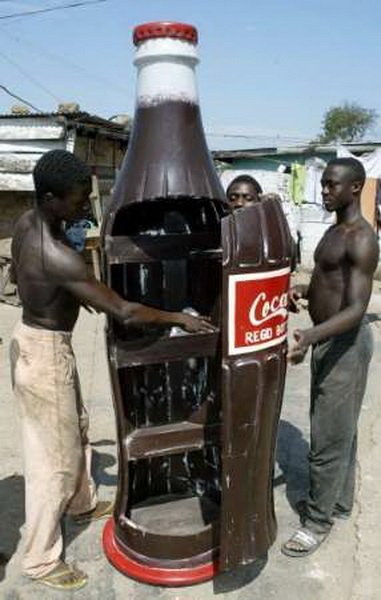 | 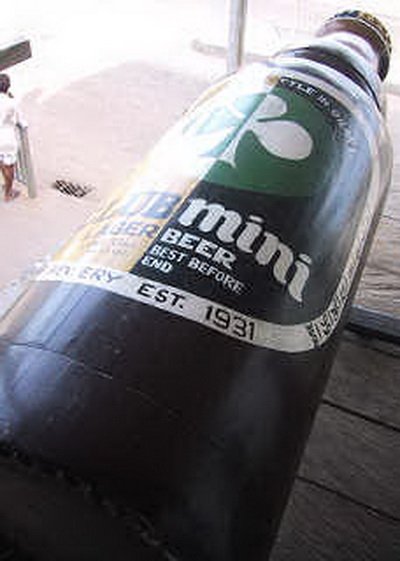 |
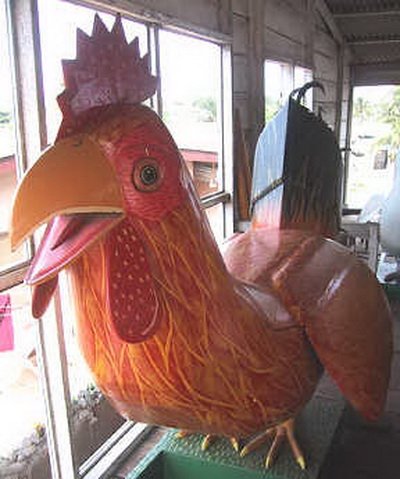 |  |
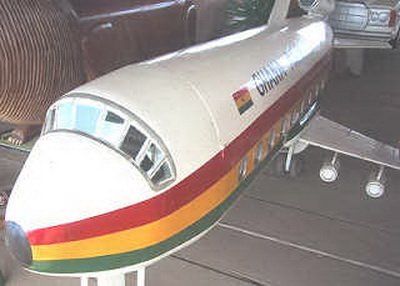 | 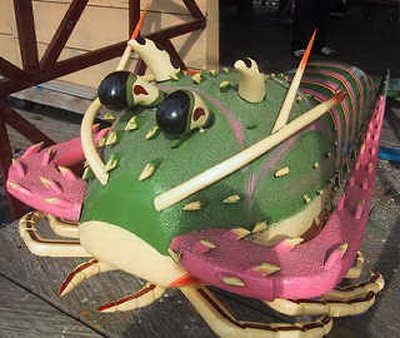 |
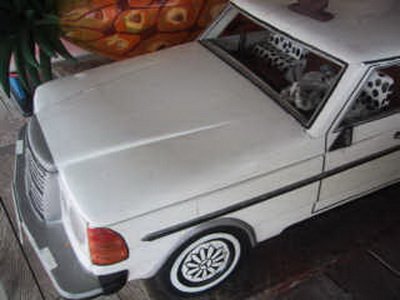 | 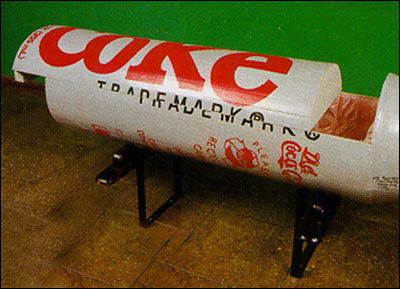 |
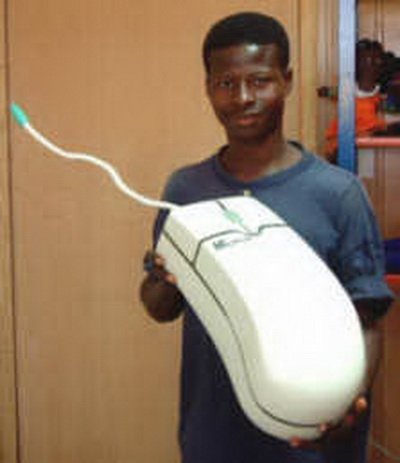 | 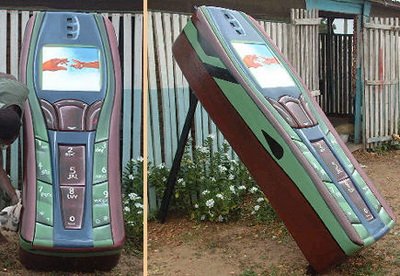 |
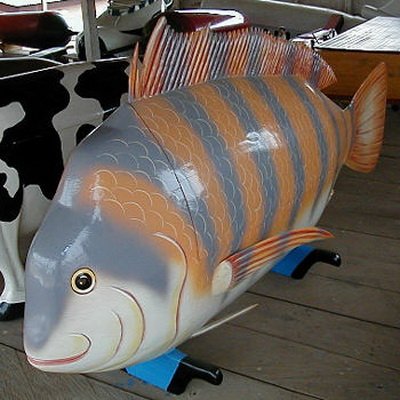 | |
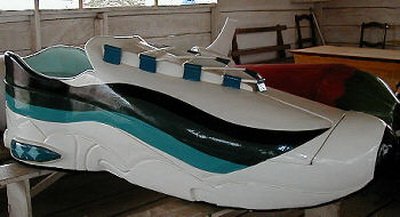 | |
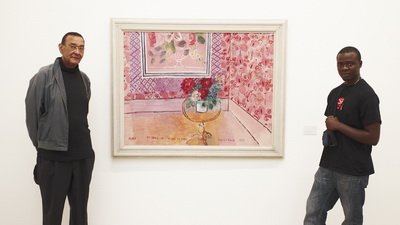 | 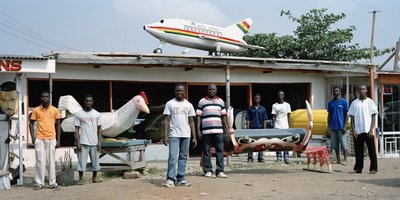 |
 | |
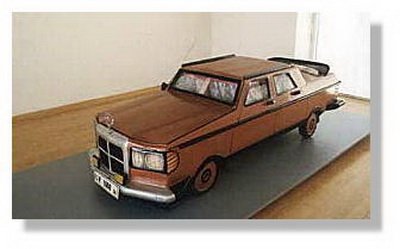 | |
See also in the press: http://smi2.ru/wodo/c265113/ http://www.lifenews.ru/gallery/3081 http://bipbap.ru/2011/03/20/strannye-veselye-groby-7-foto.html |
